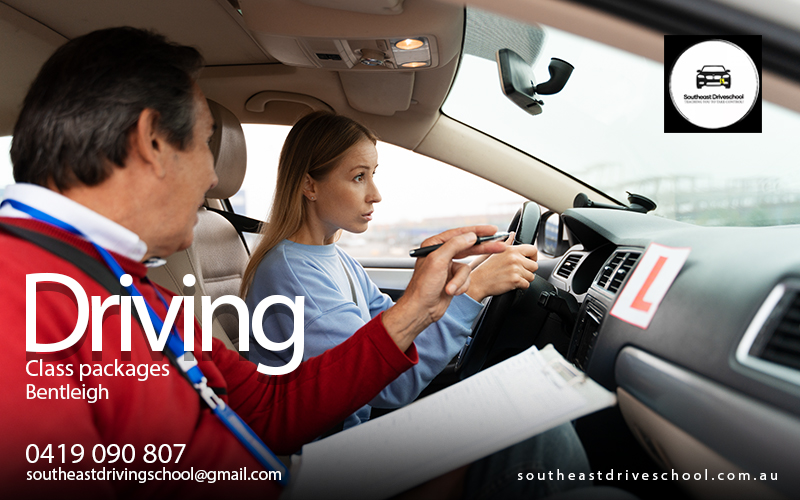Seasoned drivers of today have trouble recalling how they felt when they got behind the wheel for the first time. They perhaps remember how overwhelming it was for them. Driving training has progressed significantly in the past decade but a few aspects of the training process remains unphased.

All Driving lessons package deals Clayton include theoretical, practical and behind-the-wheels training by a seasoned instructor. This is followed by an examination to assess the driver’s skills concerning these aspects. It can be highly beneficial for any new trainee to keep in mind the things mentioned in this blog to have a more enhanced driver training experience.
What will be taught behind the Wheel?
The following should be able to provide a clear picture of what it will be like training behind the wheel;
Learning the Basics
It is not likely that the instructor would allow a novice to head straight into adverse traffic and start driving in reverse. Instead, they would start with the most basic elements of learning how to drive such as familiarizing themselves with the controls, adjusting the mirrors and seats, operating the wiper, which pedal serves what function and how to safely move or stop the vehicle.
Motor Vehicle Safety
All drivers must be familiar with all the automotive safety features, from basic to advance. The first few hours of the training session would involve the driving instructor introducing all the safety features of the vehicle such as the airbags, seat belts, child restraint systems and so on. Knowing these features is mandatory for passing the driving exam.
Visual Awareness
While conducting behind-the-wheels training, the instructor would reiterate the importance of visual awareness while driving on the road. This involves performing detailed visual research of the surroundings which includes scanning all directions, checking all sides, looking out for road hazards and always keeping one’s eyes on and attention on the road.
Proper Positioning
This is perhaps the most significant lesson behind the wheels. Vehicle positioning is a skill that can help a driver reduce the possibility of accidents 80% of the time. The instructor teaches the trainee to maintain a safe following distance with the car in front of them. This is done to ensure there is enough space to bring the vehicle to a stop while preventing a collision, in case the vehicle ahead stopped suddenly. Tailgating is when a driver drives too close to the rear of the vehicle in front of them.
What will take place during the Lessons?
The following points should help set the right expectations for one’s first driving lesson;
- Learner’s Permit: For any novice to get behind the wheel they must be issued a learner’s permit or student license. They must carry this permit to each practical lesson to be legally allowed to drive.
- Passenger Seat: When the trainee is picked by the instructor, they will be seated in the passenger seat until the instructor has driven them to a park or safe open road to initiate the training.
- Lesson Introduction: Most trainees feel extremely anxious on the first day. The training instructor has been trained to help the student ease their anxiety so that they can be more receptive during the lesson.
- Viewing the Mirror: During the initial part of the driving lesson, the instructor would introduce the trainee to the different tools they have at their disposal. This is when they will be introduced to the importance of mirrors and how to use them to scope one’s surroundings on the road.
- Driving: The trainee would begin driving by learning different driving maneuvers. They do not need to worry about heading into traffic during this time. The lesson would only cover about 4 to 6 miles with not too much driving around. There probably would be several pullovers when the instructor will impart their wisdom.
- Switching Seats: The driving instructor is well aware of the fact that most trainees learn best not through listening and doing but by watching things being done the correct way. So it makes sense that they would be switching seats with the trainee on several occasions.
- Q/A Round: At the end of the first lesson arrives the opportunity when the trainee can ask and clarify any questions from the driving instructor and they will explain and demonstrate in detail.
- Trainer Familiarization: The trainer and trainee will be spending a lot of time together during the training sessions. Hence, the trainee should take the time during the first few lessons to familiarize themselves with the instructor.
- Personalized Report: After evaluating the level of skill and progress of the trainee, the instructor would prepare a personalized report which can be reviewed by the trainee themselves or their parents. This report can be a highly beneficial reference when practicing lessons in isolation.
Factors that will affect Driver Training
There are certain reasons why people opt for tutored driving lessons at a driver training centre instead of opting for at-home lessons provided by a relative or a friend. These factors have been mentioned in the following;
Distractions
Any driver has to be aware of several factors when driving on the road. These factors include the following;
- The cars driving around them.
- The correct lane to drive on, so they can change within a few minutes.
- They must remember to use signals.
- They must be aware of how fast a car approaches them.
- They have to be aware of the speed limit.
- They need to know if someone is tailgating behind them.
Keeping all these minds can easily make a novice driver nervous which is why training at a driving centre can help them overcome any distractions.
Confidence
Although it may seem pretty trivial having confidence in one’s driving skills can make a huge difference in preventing accidents. If a driver is scared of driving, any unaccounted-for situation can lead them to freeze up and cause an accident. Training under an expert trainer can do wonders in improving an individual’s confidence in driving. They prepare them for different situations so that the trainee doesn’t feel surprised when one happens to occur in real life scenario.
Safety
Recent studies have revealed that attending an accredited driving school automatically decreases a driver’s chance of being involved in an accident.
Professional driving classes help novices become safer drivers.
Etiquette
Among the many things a driving instructor would teach a trainee is etiquette. This is also among those things that are not mentioned by law but are extremely essential in driving. Having good driving etiquette is a unique technique that helps cancel out most unfavorable situations. For instance, if another driver feels disrespected and goes into a driving rage to overtake another, any wrong step can end up causing a severe accident.

Conclusion
It is best to keep in mind when choosing driving class packages in Bentleigh that there is no such thing as one-size-fits-all. Driving centers may follow different training formats and schedules which suit the requirements of varying people.
Leave a comment